SAP Payroll
Filter By
Browse By
- SAP Analytics and AI
- SAP Application Development and Integration
- All SAP Application Development and Integration
- SAP ABAP
- SAP ABAP Development Tools
- SAP ABAP Test Cockpit
- SAP API Management
- SAP BAPI
- SAP Basis
- SAP BRF
- SAP Business Application Studio
- SAP CMS
- SAP Design Studio
- SAP Development Tools
- SAP DevOps
- SAP EAI
- SAP EDI
- SAP Extension Suite
- SAP Fiori
- SAP Fiori Elements
- SAP Integration Suite
- SAP Low Code Application Development
- SAP Low Code Automation
- SAP Netweaver
- SAP Release Management
- SAP UI5
- SAP Web Application Server
- SAP Web IDE
- SAP Business Process Management
- SAP Center of Excellence
- SAP CIO
- SAP Customer Experience
- SAP Data and Data Management
- All SAP Data and Data Management
- SAP BW
- SAP BW/4HANA
- SAP Crystal Reports
- SAP Data Archiving
- SAP Data Center
- SAP Data Governance
- SAP Data Integration
- SAP Data Migration
- SAP Data Quality
- SAP Data Services
- SAP Data Strategy
- SAP Data Visualization
- SAP Data Warehouse Cloud
- SAP DMS
- SAP Document Control
- SAP EIM
- SAP ETL
- SAP ETL Tools
- SAP HANA
- SAP HANA Administration
- SAP HANA Deployment Infrastructure
- SAP HANA Studio
- SAP Master Data
- SAP Master Data Governance
- SAP MDM
- SAP Enterprise Architect
- SAP Enterprise Asset Management
- SAP ERP
- SAP Finance
- All SAP Finance
- SAP Accounting
- SAP AR AP
- SAP Asset Accounting
- SAP Billing Systems
- SAP BPC
- SAP BRIM
- SAP Cash Management
- SAP Central Finance
- SAP Controlling
- SAP COPA
- SAP Cost Center Accounting
- SAP Currency Risk
- SAP e-invoicing
- SAP FICO
- SAP Finance Automation
- SAP Advanced Financial Closing
- SAP Financial Consolidation
- SAP Financial Planning
- SAP FX Risk
- SAP General Ledger
- SAP Global Tax Management
- SAP Hyperion
- SAP Order to Cash
- SAP Payment Processing
- SAP Profitability Analysis
- SAP Rebate Management
- SAP S/4HANA Finance
- SAP SWIFT Compliance
- SAP Treasury Management
- SAP Universal Journal
- SAP Governance Risk and Compliance
- SAP Human Capital Management
- SAP Intelligent Technologies
- SAP Platform and Technology
- All SAP Platform and Technology
- SAP Business Technology Platform
- SAP Cloud Connector
- SAP Cloud Integration Platform
- SAP Cloud Migration
- SAP Cloud Platform
- SAP Cloud Providers
- SAP Cloud Strategy
- SAP Digital Signature
- SAP Container Platform
- SAP HANA Enterprise Cloud
- SAP Digital Asset Management
- SAP HEC
- SAP Digital Integration Hub
- SAP Hyperscalers
- SAP Infrastructure
- SAP Messaging
- SAP Smart Forms
- SAP Quality and Testing
- SAP Security
- SAP Spend Management
- SAP Supply Chain Management
- All SAP Supply Chain Management
- SAP APO
- SAP Asset Management
- SAP Business Network
- SAP Digital Manufacturing Cloud
- SAP Digital Twin
- SAP EWM
- SAP IBP
- SAP Inventory Management
- SAP Label Printing
- SAP Logistics
- SAP Manufacturing
- SAP Manufacturing Automation
- SAP MES
- SAP MII
- SAP MM
- SAP MRO
- SAP MRP
- SAP Order Management
- SAP Plant Maintenance
- SAP PLM
- SAP Production Planning
- SAP S&OP
- SAP SD
- SAP SPM
- SAP Supply Chain Planning
- SAP Track and Trace
- SAP Transportation Management
- SAP System Administration
What Is SAP Payroll?
Payroll is such a vital component to employee satisfaction that many companies are hesitant to make any changes — even if there are potential benefits to updating processes or technologies. This is reflected in SAP Payroll offerings — the traditional on-premise SAP Payroll and the cloud-based SAP SuccessFactors Employee Central Payroll. The cloud offering is essentially identical to the on-premise offering, except for where the servers are hosted.
SAP has hinted at plans to build a next-generation payroll solution, but that often takes a backseat to investments in other areas of its human resources (HR) technology suite.
Making an error on an employee’s paycheck is one of the fastest ways to receive a notice of resignation, so the reticence to change payroll at many companies, and the motivation for SAP to build a new payroll system, is explainable.
What Is SAP Payroll?
Payroll is such a vital component to employee satisfaction that many companies are hesitant to make any changes — even if there are potential benefits to updating processes or technologies. This is reflected in SAP Payroll offerings — the traditional on-premise SAP Payroll and the cloud-based SAP SuccessFactors Employee Central Payroll. The cloud offering is essentially identical to the on-premise offering, except for where the servers are hosted.
SAP has hinted at plans to build a next-generation payroll solution, but that often takes a backseat to investments in other areas of its human resources (HR) technology suite.
Making an error on an employee’s paycheck is one of the fastest ways to receive a notice of resignation, so the reticence to change payroll at many companies, and the motivation for SAP to build a new payroll system, is explainable.
Vendors such as Deloitte offer SAP Payroll and SAP SuccessFactors Employee Central Payroll implementation and consulting services. There are companies, such as Alight, that also administer payroll services for an organization partially or completely with the option to use technologies like SAP Employee Central Payroll.
Many SAP customers also use non-SAP payroll systems that integrate with SAP systems such as ADP or Paychex.
Key SAP Payroll Considerations for SAPinsiders
- Mainstream maintenance for on-premise SAP Payroll is scheduled to end in 2027. Current SAP Payroll customers will have to consider the option of moving to SAP SuccessFactors Employee Central Payroll in the cloud, which currently has no end-of-maintenance date, or a non-SAP payroll product. Staying with on-premise SAP Payroll beyond 2027 will require extra maintenance fees or third-party maintenance services.
- Payroll has slower cloud adoption than other HR technologies. In our recent HR Technology State of the Market report, among surveyed respondents that indicated they were using payroll technology, 18% indicated that the system was currently deployed in the cloud, the lowest cloud adoption rate of any technology mentioned. Cloud payroll adoption is rising, with another 19% currently implementing a cloud payroll solution. However, nearly 11% of respondents indicated having no plans for payroll in the cloud, more than double the proportion of any other technology.
- Payroll accuracy is a top HR objective. In the same HR Technology State of the Market report mentioned above, reducing errors in time and payroll was the top HR technology strategy objective among respondents, which were predominantly HR professionals. Getting payroll right isn’t just a concern for the finance and compliance departments. Those in HR know the importance it holds to their ability to retain talent.
468 results
-

- SAP SuccessFactors
 Premium
Premium
A look at SAP SuccessFactors Payroll Control Center Manage Configuration
Reading time: 5 mins
In 2021 SAP SuccessFactors delivered a new experience for how to configure the payroll control center application. SAP has delivered multiple enhancements throughout 2022 including game changing pre-delivered content that makes it much easier for customers to get up and running. Read this article to understand the key functionality including the latest and greatest innovations.…
-

 Premium
Premium
Tips for Implementing Basic Management of Global Employees in SAP ERP HCM
Reading time: 17 mins
Global projects or companies with an expatriate population that plan on activating the Management of Global Employees module should pay special attention to the extra level of effort needed regarding process changes, configuration, and customizations. Management of Global Employees allows global implementations to have a separate record per country assignment related to a global ID...…
-

 Premium
Premium
Efficiently Handle Mergers and Acquisitions in SAP HR
Reading time: 34 mins
Depending on the nature of a merger or acquisition (e.g., company or line of business level), the challenges differ. I’ll outline several common scenarios in the HR submodules and tell you how to prepare for them. Key Concept While planning for a merger or acquisition, you should create a deliverables document to manage the process...…
-
-

- SAP Payroll
 Premium
Premium
Understanding the Payroll Time Sheet in SuccessFactors Employee Central
Reading time: 26 mins
Learn about SuccessFactors Payroll Time Sheet functionality. This functionality is included in Employee Central to store employee attendance time and overtime information per companies’ requirements. Gain a good understanding of the Payroll Time Sheet, how it records employees’ attendance or overtime in the Payroll Time Sheet module, and its capabilities, which provide project teams with...…
-

To Outsource or Not to Outsource: The Role Payroll Can Play in Cloud HCM Adoption
Reading time: 7 mins
SAPinsider recently spoke with Mike Ellis, President, Rizing HCM APAC, to discuss the state of SAP SuccessFactors market today, global trends he is hearing from clients, and options for SAP customers in the area of outsourcing payroll specifically. Ellis, who has nearly 30 years of experience in HR transformations, cloud implementations, and payroll outsourcing, was…
-

 Premium
Premium
Payroll and Benefits Integration: Understanding Evaluation Dates
Reading time: 18 mins
In benefits, cost information is presented in terms of expected or estimated amounts. A complex set of factors comes into play during payroll processing that can cause the actual deductions to be different. This article examines the integration between payroll and benefits so that you can explain to your end users why this happens. In...…
-

- SAP Payroll
 Premium
Premium
What Are the Key Considerations Behind the Use of the Employee Central Payroll Global Template?
Reading time: 13 mins
Review these considerations for using a global template for implementing Employee Central Payroll. Various decisions may positively or negatively affect your payroll implementation. Membership Required You must be a member to access this content.View Membership LevelsAlready a member? Log in here
-
-

- SAP Payroll
 Premium
Premium
How to Configure Canadian Payroll Year-End Mapping
Reading time: 17 mins
Learn the year-end process for Canadian SAP payroll systems, and what year-end forms are required. This step-by-step process shows how to configure the year-end mapping process and how to test the configuration. Key Concept The year-end process in SAP payroll is necessary because the system needs to have a required configuration for running payroll and...…
-

 Premium
Premium
Upgrades Part 4: Fix a Payroll Driver Runtime Error
Reading time: 10 mins
Discover a payroll problem you may face in your main payroll driver program when you upgrade from R/3 4.6C to mySAP ERP and see how you can permanently correct it. Key Concept Payroll is based on an international payroll driver that SAP provides for each country. The country-specific payroll drivers take the statutory and administrative...…
-

 Premium
Premium
Key Facts Every Company with Canadian Connections Needs to Know About Legal Deductions
Reading time: 16 mins
Learn how your SAP system helps you to complete legal deductions in Canada for federal and provincial taxes, the Canada Pension Plan/Québec Pension Plan (CPP/QPP), and Employment Insurance (EI). Key Concept If your company is located in Canada, has recently opened a division there, or has hired Canadian employees, you must account for the legal...…
Featured Insiders
-

Luke Marson
SVP Human Experience Management, The Silicon Partners (TSP)
-

Miles Humphrey
Payroll, Shared Services and Corporate System Reform
Manager Business Services – Chief Financial Officer at Australian Federal Police
-

Daniil Serebrennikov
VTM Software Inc
Become a Member
Unlimited access to thousands of resources for SAP-specific expertise that can only be found here.
Become a Partner
Access exclusive SAP insights, expert marketing strategies, and high-value services including research reports, webinars, and buyers' guides, all designed to boost your campaign ROI by up to 50% within the SAP ecosystem.
Upcoming Events
Related Vendors
Your request has been successfully sent


